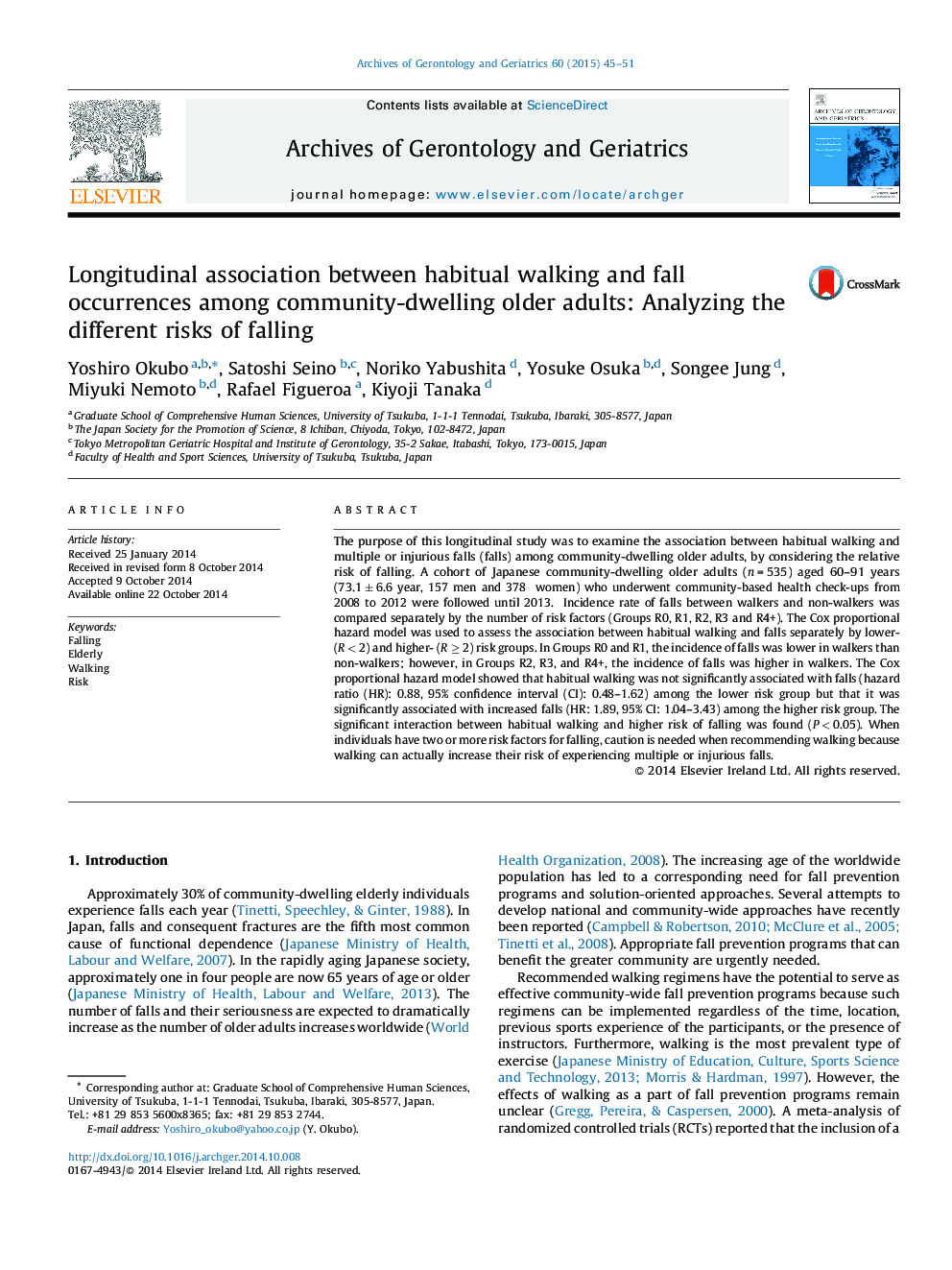| Article ID | Journal | Published Year | Pages | File Type |
|---|---|---|---|---|
| 1902759 | Archives of Gerontology and Geriatrics | 2015 | 7 Pages |
•The effect of walking on multiple or injurious falls is modified by the presence of risk factors for falling.•When individuals have two or more risk factors for falling, habitual walking increases individuals’ risk of multiple or injurious falls.•Safe walking programs for higher-risk community-dwelling older adults are needed.•Habitual walking among lower-risk community-dwelling older adults does not increase individual's risk of falls and may have positive effects on falls prevention in a long term.
The purpose of this longitudinal study was to examine the association between habitual walking and multiple or injurious falls (falls) among community-dwelling older adults, by considering the relative risk of falling. A cohort of Japanese community-dwelling older adults (n = 535) aged 60–91 years (73.1 ± 6.6 year, 157 men and 378 women) who underwent community-based health check-ups from 2008 to 2012 were followed until 2013. Incidence rate of falls between walkers and non-walkers was compared separately by the number of risk factors (Groups R0, R1, R2, R3 and R4+). The Cox proportional hazard model was used to assess the association between habitual walking and falls separately by lower- (R < 2) and higher- (R ≥ 2) risk groups. In Groups R0 and R1, the incidence of falls was lower in walkers than non-walkers; however, in Groups R2, R3, and R4+, the incidence of falls was higher in walkers. The Cox proportional hazard model showed that habitual walking was not significantly associated with falls (hazard ratio (HR): 0.88, 95% confidence interval (CI): 0.48–1.62) among the lower risk group but that it was significantly associated with increased falls (HR: 1.89, 95% CI: 1.04–3.43) among the higher risk group. The significant interaction between habitual walking and higher risk of falling was found (P < 0.05). When individuals have two or more risk factors for falling, caution is needed when recommending walking because walking can actually increase their risk of experiencing multiple or injurious falls.
